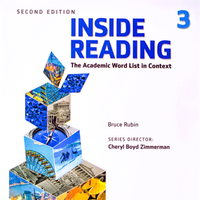6- a whale of a wheel
In 1889, France hosted the first Exposition Universelle, or World's Fair, in Paris. In every way, the Exposition was so big, so glamorous, so exotic that no one believed anything could ever surpass it. The city of Chicago, Illinois, decided to try.
The Chicago World's Fair was held in 1893, but planning and building started much sooner. The Fair's organizers wanted to show the world that the United States, and specifically Chicago, was just as capable of grand artistic and technological wonders as France. The centerpiece of the Paris Exposition was an elegant tower of steel tapering up to the sky. It was designed by Gustav Eiffel and gave daring visitors a view of Paris that took their breath away. The organizers of the Chicago World's Fair had to come up with something even more magnificent.
Finding a suitable design to rival the Eiffel Tower proved difficult. Architect Daniel H. Burnham was in charge of the project for the Chicago World's Fair. He received dozens of proposals from engineers and architects around the country to build various kinds of towers. One day, he received a brief proposal and rough draft of plans for something more unbelievable
and outrageous than any prior proposal. The author of this proposal was George Washington Gale Ferns Jr.
Ferris proposed building a gigantic wheel that people could ride on as it turned. Burnham rejected Ferris's proposal. He could not believe that such a thing could be safe. It must violate the laws of physics. Its own weight would surely distort the metal beams, causing it to turn irregularly and eventually collapse. Despite Burnham's fears, Ferris knew his design was sound. He knew that equal pressure applied to every spot on the wheel would balance the forces acting on it. Physics was on his side.
Ferris revised the proposal three times and drew up many more drafts of engineering plans. He added countless paragraphs of detailed explanation on the engineering required. He got other engineers to inspect his plans and confirm their soundness. Ferns finally obtained Burnham's approval in December 1892 and began construction immediately. Soon the wheel towered over the city. By opening day in May 1893, the Ferris wheel was already the star of the Chicago World's Fair.
Robert Graves was a reporter for the newspaper, The Alleghenian. He visited the World's Fair and described the Ferris wheel for readers: What is the principle, the chief principle, on which the wheel is constructed? It is that of a bicycle wheel.... The lower half of the wheel simply hangs from the mighty axle [center bar], and this lower half supports the upper half by means of the steel framework of its two rims [sides].... The wheel, though apparently rigid in its construction, has just enough elasticity to make this method of support possible, and yet not enough elasticity to produce any appreciable trembling or slipping effect.
The wheel was supported by two 140-foot (43-meter) steel towers. The 45-foot (14-meter) axle was the largest single piece of forged steel at the time in the world. The wheel itself had a diameter of 250 feet (72 meters), a circumference of 825 feet (251 meters), and a maximum height of 264 feet (80 meters). Between the two rims of the wheel, Ferns hung 36 wooden carriages, like railroad cars, that could hold 60 people each. Every car hung from its own axle. This meant that the cars would swing slightly back and forth as the wheel slowly rotated, but they, and the people inside them, always stayed upright.
The Ferris wheel turned by the power of steam. Two huge boilers, located off the main fairgrounds, generated steam and kept it under high pressure. A .system of underground pipes delivered the high-pressure steam to a large wheel on the ground under the Ferris wheel. The energy input from the steam caused the ground wheel to rotate, which drove the movement of the whole structure. The ground wheel and the axle of the Ferris wheel were connected to each other by a massive chain that wrapped around them both.
The ground wheel and the axle both had a band of raised pieces around them, called sprockets. The links of the chain fit over the sprockets and held the chain in place. As the steam from the boilers forced the ground wheel to rotate, the chain was pulled along the sprockets. This caused the axle above to rotate as well. The axle then turned the Ferris wheel. A series of brakes and other control devices regulated the energy input to keep the wheel's movement smooth and steady.
Ferris was given credit for the success of the Chicago World's Fair. His wheel was not only a technological marvel, but a thing of beauty. In fact, the fair's organizers worried that Ferns might have done his job too well. The Ferris wheel seemed too light, too delicate to support itself. History records, however, that well over a million passengers rode the wheel during the Fair without incident.
The influence of Ferris's engineering and entertainment marvel is still clear today. In 1999, London, England, continued the tradition of marking momentous occasions by erecting a Ferris wheel. The London Eye, the largest Ferns wheel in the world, was built to celebrate the beginning of the new millennium. On a smaller scale, Ferris wheels of various sizes and types are attractions at fairs and amusement parks around the world. More than a century after it first dazzled visitors at the Chicago World's Fair, the Ferris wheel still has the power to fascinate, thrill, and amaze.

